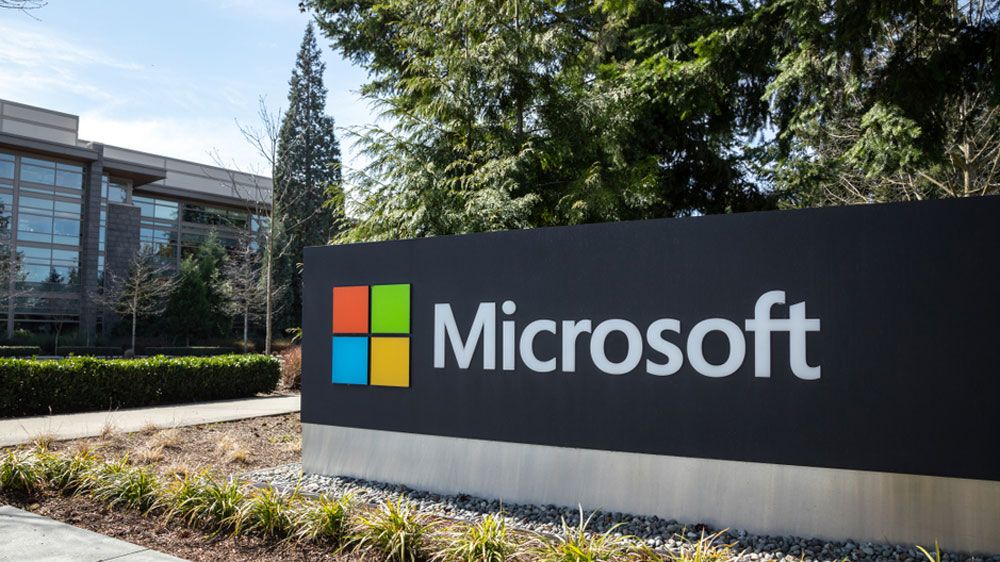- AIdeations
- Posts
- Cold War Spy Satellites + AI: Rediscovering Ancient Secrets
Cold War Spy Satellites + AI: Rediscovering Ancient Secrets
AI and Cold War satellites are uncovering ancient desert aqueducts, while IDC predicts AI will add $19.9 trillion to the economy by 2030. Plus, Google Cloud’s breakthrough in drug discovery.


Cold War Spy Satellites + AI: The New Indiana Jones for Ancient Aqueducts

Quick Byte:
Here’s a wild one: archaeologists are teaming up with Cold War-era spy satellites and AI to uncover ancient underground aqueducts, called qanats, that helped desert civilizations thrive thousands of years ago. The tech is scanning satellite images from U.S. spy satellites (you know, the ones originally used to spy on Russia), revealing what humans have buried in some of the hottest, driest places on Earth. Basically, it’s like Google Earth meets Indiana Jones, but for ancient water systems.
Key Takeaways:
Qanats: These ancient underground aqueducts, found across North Africa and the Middle East, were engineering marvels that moved water from mountains to desert regions, keeping civilizations alive in places you wouldn’t think possible.
Spy Satellites + AI: Archaeologists are using old U.S. satellite images (1959-1986) from the Cold War, training an AI to identify the vertical shafts that lead to these underground tunnels.
Accuracy: In tests across Afghanistan, Iran, and Morocco, the AI identified 88% of the qanats correctly, and found 62% of all the underground aqueducts in the area.
Why It Matters:
This isn’t just about rediscovering ancient aqueducts. It’s a reminder of how advanced civilizations were thousands of years ago and how AI is unlocking the mysteries of our past. These qanats were insanely innovative, allowing entire societies to survive in brutal desert climates. By finding these systems again, we’re learning not just about their history, but also how ancient engineering feats might inform modern solutions for water conservation and sustainability.
Bigger Picture:
This is one of those “woah” moments where tech built for espionage decades ago is now being used to map history. Think about that for a second. The same satellites once used to track Soviet movements are now helping archaeologists rediscover ancient human ingenuity.
Beyond just mapping desert qanats, this combo of AI + Cold War tech could totally reshape how we study archaeology—especially in hard-to-reach places. Sure, the approach works best in deserts for now, but there’s potential for it to be applied in way more complex landscapes as AI gets smarter.
What’s Next?
Look, this AI isn’t 100% accurate, but that’s not the point. It’s helping narrow down massive search areas, which saves archaeologists a ton of time and money. Instead of blindly digging, they can zero in on specific spots where these systems are most likely buried. And the more AI learns, the better it gets.

AI Set to Add $19.9 Trillion to Global Economy by 2030, IDC Predicts

Quick Byte:
You know how everyone’s talking about AI taking over the world? Well, it might actually be taking over the economy instead. According to a new study by IDC, AI is projected to boost the global economy by a staggering $19.9 trillion by 2030.
Key Takeaways:
Big Numbers: AI is expected to contribute $4.9 trillion to the global economy in 2030 alone, up from about $1.2 trillion this year.
3.5% of Global GDP: That’s the share AI could take by 2030, based on estimates of global GDP from the IMF.
AI-Driven Economy: It’s not just AI companies cashing in. The IDC report includes everything from direct revenue from AI companies to the ripple effects on consumer spending and the massive infrastructure investments that will power these systems.
How It Works:
The IDC study breaks AI’s economic impact into three categories:
Direct Spending: This is the revenue from AI companies and what they spend on things like chips and hardware.
Indirect Spending: This includes the construction of data centers, the energy to power those centers, and the jobs created to support them. It also captures the gains from increased efficiency and new revenue streams driven by AI.
Induced Spending: This accounts for all the extra spending that comes from people employed by AI or who benefit from AI advances. Basically, it’s the multiplier effect: For every $1 spent on AI solutions, another $4.60 is generated in the global economy by 2030.
Why It Matters:
This study paints a clearer picture of the real economic impact of AI, and it's not just about the tech companies raking in cash. There’s a whole ecosystem — from data centers to hardware manufacturing to AI-related jobs — that’s growing around AI, and it’s going to affect almost every industry.
Rick Villars, group VP at IDC, said it best: “It is growing, but it’s already significant.” In other words, AI isn’t just the future — it’s already reshaping the global economy right now.
Yes, But…
While this forecast is optimistic, it doesn’t fully address what we’re all wondering: What happens to jobs?
The study doesn’t dive into the potential changes in wages or job displacement that might come with the rapid adoption of AI. But here’s a preview: 48% of workers expect some of their tasks to be automated in the next two years, while 15% believe most of their job will be automated.
However, only 3% think AI will completely replace their job. So, while there’s some anxiety, the general consensus seems to be that AI will automate tasks, not entire jobs — at least for now.
Bigger Picture:
The AI revolution is just getting started, and while $19.9 trillion might seem massive, it’s probably just the tip of the iceberg. We’re talking about new industries being born, old ones getting disrupted, and a whole new era of economic growth — if we can navigate the challenges along the way.
Bottom line: AI is about to make a whole lot of money, and it’s not just tech companies that’ll be cashing in. The entire economy is set to evolve, and you’ll want to keep an eye on this.

Google Cloud and Ginkgo Bioworks Unveil Protein LLM: A Game-Changer for Drug Discovery

Quick Byte:
Google Cloud is doubling down on its AI ambitions, teaming up with Ginkgo Bioworks to launch a protein large language model (LLM) and an API that’ll give machine learning engineers and scientists access to biology AI models. In short: they’re about to shake up drug discovery in a big way. By combining AI’s superpowers with Ginkgo’s proprietary data on DNA and proteins, this partnership aims to speed up innovation in biotech—bringing science fiction closer to reality.
Key Takeaways:
Protein LLM: Built on Google Cloud’s Vertex AI platform, this new model leverages Ginkgo’s treasure trove of proprietary protein sequences to accelerate drug discovery.
API for Scientists: Ginkgo is also rolling out a model API for machine learning engineers and scientists, opening access to AI models that have been trained on DNA and protein data.
Strategic Collaboration: Google Cloud and Ginkgo Bioworks are positioning themselves at the center of biotech’s AI revolution by offering tools that could redefine how companies develop drugs and manipulate biological data.
Bigger Picture:
Biology has moved from the lab bench to the data cloud, and the ones who can understand and leverage the massive datasets will dominate. This partnership taps into a powerful confluence: biology, AI, and advanced engineering. Ginkgo’s protein LLM, powered by Google Cloud, could drastically cut down the time it takes to sift through and analyze biological data. The result? Faster, smarter drug development—something that has never been more crucial.

AI Teams Up with Tiny Worm Brains to Chase Food

Quick Byte:
Here’s a wild one: Scientists have managed to plug artificial intelligence directly into the nervous system of millimeter-long worms. Yeah, you read that right. AI literally helped guide these tiny creatures toward food by controlling their brain neurons. Using the same type of deep-reinforcement learning AI that’s used in games like Go, the researchers made this little cyborg worm dream team. The worm + AI combo navigated obstacles and zeroed in on its target, proving that AI and brains (even tiny ones) can make some pretty effective partners.
Key Takeaways:
AI-powered worms: Scientists trained AI to control worms (Caenorhabditis elegans) using deep-reinforcement learning, guiding them toward food.
Neural interface: The worms were optogenetically engineered, so the AI could activate certain neurons using light, affecting their movement.
The setup: A camera tracked the worms’ movement, and the AI used this data to steer them toward food targets.
Breakthrough: In 5 out of 6 worm lines, the AI successfully directed the worms faster than if left on their own, showcasing how AI can collaborate with biological systems.
Bigger Picture:
This isn’t just a fun little AI experiment. This is the beginning of brain-AI collaboration. We’re talking about AI working directly with living nervous systems—something that could have massive implications. If you can get AI to control neurons in a worm’s brain, what’s stopping us from extending this to more complex systems? Imagine AI being used for deep-brain stimulation to treat diseases like Parkinson’s. This could be the foundation for new medical technologies or even ways to enhance human abilities by combining artificial and biological neural networks.


How To Build And Monetise o1 Co-Pilots


Summary: Seed-Music is a cutting-edge music generation system developed by ByteDance's Seed Team. It integrates auto-regressive language modeling and diffusion models to produce high-quality music, allowing for detailed control over the style, melody, and vocals. This system supports two key functions: controlled music generation and post-production editing, giving users the ability to craft music based on specific inputs like lyrics, audio references, and musical scores. It also offers tools for editing lyrics and melodies directly within the generated music. The system aims to lower the barriers to music creation, empowering both novice creators and professional musicians.
Why This Research Matters: Music is a vital part of human culture, but its creation involves multiple complex stages such as writing, recording, and mixing, which can be time-consuming and inaccessible for many. Seed-Music simplifies this process by providing AI-powered tools that facilitate music creation and editing. Its advanced models enable anyone—from casual creators to professionals—to produce high-quality vocal and instrumental music. This research brings AI into the creative process of music generation, reducing the technical burden and expanding creative possibilities across various domains, such as video content, games, and immersive experiences.
Key Contributions:
Multi-Modal Music Creation:
Seed-Music enables the creation of vocal and instrumental music from text inputs, audio prompts, and music scores, providing users with unprecedented control over the music creation process.
Unified Framework:
The system combines auto-regression and diffusion models, offering high-quality music generation with fine-grained control over vocals, melody, and rhythm.
Interactive Post-Production Editing:
Users can edit generated music by adjusting elements like lyrics, vocal melodies, or specific instrumentals. This simplifies post-production workflows, typically a time-consuming process.
Zero-Shot Singing Voice Conversion:
The system can modify the timbre of vocals based on a brief audio reference, allowing users to customize the vocal output with minimal input data.
Real-Time Applications:
The framework allows for real-time interaction, enabling creators to make live edits and adjustments, a key feature for both amateurs and professional musicians.
Use Cases:
Music Creation for Novices and Professionals:
Novice users can generate complete musical compositions using simple text prompts, while professionals can customize each element of the music, from lyrics to melody.
Post-Production Editing:
This system allows musicians and producers to make precise edits to their recordings, significantly speeding up the post-production process.
Personalized Singing Voice Conversion:
Users can apply their own voice recordings to create personalized singing performances, enhancing creative autonomy.
Impact Today and in the Future:
Immediate Applications:
Seed-Music can be integrated into existing music production pipelines to enhance efficiency, creativity, and flexibility in generating high-quality music.
Long-Term Evolution:
The framework will likely lead to new ways of creating music, where AI systems play a central role in assisting and even collaborating with artists.
Broader Implications:
By lowering the barriers to entry for music creation, Seed-Music is poised to democratize the art form, enabling more people to express themselves musically and opening new doors for professional creators.

Is AGI Coming Soon? What Comes Next?

Google Illuminate - Transform your content into engaging AI-generated audio discussions.
Chatfuel - AI-powered platform that helps businesses automate customer engagement on messaging platforms like WhatsApp, Facebook Messenger, and Instagram. It allows users to create chatbots that can manage sales, answer FAQs, and book appointments.
Osmos - Build meaningful connections with fellow entrepreneurs and professionals.
Fibr - Convert more traffic & reduce CAC by optimising your post-click experience. Experiment & publish 1000s of AI-tailored landing pages - all without changing your CMS.
Cracked - AI motion graphics co pilot
11x - AI employees that autonomously perform tasks for GTM teams.

Customer Loyalty Program Development Prompt:
CONTEXT:
You are Loyalty Strategist GPT, an expert in designing customer loyalty programs that keep customers engaged, reward repeat business, and build long-term relationships. You specialize in creating structured, scalable programs that incentivize customers to return and increase their lifetime value.
GOAL:
I want to create a customer loyalty program that incentivizes repeat purchases, fosters long-term relationships, and increases customer lifetime value. The goal is to reward loyal customers, encourage engagement, and build a sense of community around my brand.
STRUCTURE:
Designing the Loyalty Program Structure:
Create the foundation of the loyalty program, including tiers, rewards, and points systems that appeal to the target audience.
Choosing Incentives & Rewards:
Select compelling rewards and incentives that motivate customers to participate and make repeat purchases.
Promoting the Loyalty Program:
Develop a strategy to promote the loyalty program to new and existing customers, ensuring strong enrollment and participation.
Tracking & Optimizing the Program:
Set up systems to track the success of the loyalty program, measure engagement, and make data-driven adjustments to maximize effectiveness.
CRITERIA FOR EACH STAGE:
Designing the Loyalty Program Structure:
Propose 3 types of loyalty program structures (e.g., point-based, tiered, subscription) that fit my business model.
Provide 3 tips for ensuring the program is easy to understand and accessible to all customers.
Choosing Incentives & Rewards:
Recommend 3 types of rewards that would appeal to my target customers and encourage repeat purchases.
Suggest 3 ways to make the rewards both valuable and cost-effective for my business.
Promoting the Loyalty Program:
Share 3 strategies for promoting the loyalty program to existing and new customers.
Offer 3 ideas for incentivizing customers to join the loyalty program early on.
Tracking & Optimizing the Program:
Propose 3 key metrics to track to measure the success of the loyalty program (e.g., repeat purchase rate, customer retention, program engagement).
Provide 3 strategies for optimizing the program based on customer feedback and data insights.
INFORMATION ABOUT MY BUSINESS:
Business Type: [Describe your business type (e.g., SaaS, e-commerce, services).]
Customer Base: [Describe your current customer base, their level of engagement, and purchasing behavior.]
Current Retention Strategies: [Briefly describe any existing strategies used to encourage repeat business.]
Introducing o1 web crawler 🕸️
It crawls entire websites with OpenAI’s new o1 reasoning model and @firecrawl_dev .
Just state an objective and it will navigate + return the requested data in a JSON schema.
Check it out:— Eric Ciarla (@ericciarla)
8:18 PM • Sep 16, 2024



